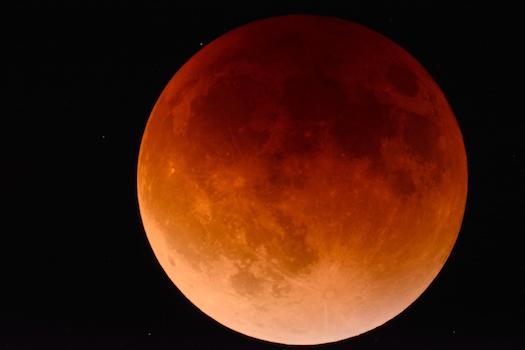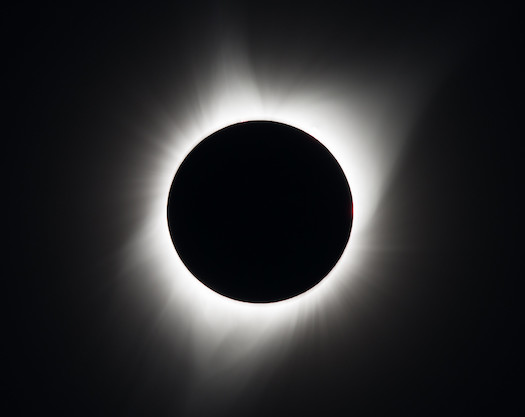Middle School Planetary Science
1/160
Earn XP
Description and Tags
Name | Mastery | Learn | Test | Matching | Spaced |
|---|
No study sessions yet.
161 Terms
What is the role of gravity assists in space exploration?
It uses a planet's gravity to change a spacecraft's speed and direction, making deep space exploration more efficient (by using less fuel).
What role might life play in a planet's evolution?
Development of its atmosphere (through processes like photosynthesis)
Regulating its climate
Shaping its geology.
How are magnetic fields created on planets?
Inner planets' magnetic fields are generated by their spinning iron cores
Outer planets generate their magnetic fields through the process of metallic hydrogen (when hydrogen behaves like metal)
Theory of how Earth was formed.
A vast cloud of dust & gas was left over after the Sun's formation. Over time, gravity drew this debris together to become the planets.

How does the moon influence the Earth?
Controls Earth's tides (by its gravitational pull),
Stabilizes Eath’s axis
Explain how our solar system formed.
Scientists think the solar system formed ~4.6B years ago from a nebula pulled together by gravity.
What planets don't spin counterclockwise?
Venus and Uranus
How has the sun been a destructive force in planetary evolution?
Can harm planets and their atmosphere through solar flares, radiation, and solar wind (by stripping a planet's atmosphere).
Mars features (Size, conditions, moons, orbits, tilts)
Small, cold & thin atmosphere of CO2
Surface features like ice caps
2 moons
Mercury features (Size, conditions, moons, orbits, tilts)
Small
Extremely hot on the surface
No atmosphere
0 moons
Revolves around the Sun twice in 1 solar day
Saturn features (Size, conditions, moons, orbits, tilts)
Large
Gaseous with hydrogen and helium
Very cold in its outer layers
Known for its ring system
>82 moons
How large is the sun’s diameter?
850,000 miles
How much weaker is the sunlight in Saturn?
100X
The movement of the giant planets outward have played what important role?
The delivery of water to the Earth and inner solar system

The asteroid that wiped out the dinosaurs ~70 million years ago was likely…
Launched from the asteroid belt by Jupiter's influence.

Jupiter can remove asteroids and…
Fling them out of the asteroid belt, even towards Earth.

What protects the Earth's atmosphere from being stripped away by the solar wind?
A powerful magnetic field

Where is Earth's magnetic field generated?
The outer molten core

Pluto, and other large Kuiper Belt worlds are referred to as...
Dwarf planets
Along with Pluto, what are other Kuiper belt objects?
Quaoar, Sedna, Makemake, Eris
Triton was a...
Wandering object later drawn into Neptune and trapped by its gravity

What was unusual about Triton (Neptune's moon)?
Orbits in the opposite direction that the planet spins
Which planet in the solar system has the fastest winds?
Neptune (1,500 mph)
Why is Uranus tilted on its side?
An Earth-sized object could have smashed into it

Along with being an entirely new class of planet call an "ice giant," Uranus has…
Rings
What is the coldest outer planet?
Uranus
Explain the current theory of how the Moon was formed.
Theia crashed into Earth and a piece of Earth broke off, got caught into the Earth's gravity, and became the Moon

What are some limitations of human space exploration?
Time and speed of travel (Spacecraft can take years to reach distant destinations)
Communication delays
Radiation
Where have humans visited in space exploration?
Humans have been on the Moon
Robotic missions have landed on celestial bodies such as Mars, Venus, and Titan (Saturn’s moon).
What benefits do magnetic fields provide for a planet?
Protects a planet from solar wind (that can strip away a planet's atmosphere) and shields against cosmic radiation.
How can magnetic fields be harmful to a planet?
If they weaken or reverse (when they switch positions) they can potentially expose the planet to increased solar radiation and other space-related hazards.
How has gravity influenced the evolution of our solar system?
It formed our solar system by pulling material from a giant nebula, a cloud of dust and gas. This process led to the creation of the Sun and the planets that orbit it.
How has the Sun's evolution impacted the solar system?
It has gone through changes (getting hotter & brighter) over time, impacting the conditions and climate on the planets within the solar system.
How has bombardments by comets and asteroids impacted the solar system?
Fequently bombarded the early solar system,
Carved out craters
Shaped planetary surfaces
Contributed to the delivery of water and organic materials to some planets.
What is required for life?
Liquid Water

Asteroid
A small rocky body orbiting the sun
Dwarf Planet
A celestial body resembling a small planet but lacking certain criteria for it to be classed as such.

Planet (IAU Definition)
Orbits a star
Be big enough to form a spherical shape
Have cleared its orbital neighborhood of other debris

Why does Earth have seasons?
Earth's 23.5° tilt makes sunlight hit parts of Earth differently differently depending on where Earth is in its orbit.

Jupiter features (Size, conditions, moons, orbits, tilts)
Largest planet
Gaseous w/ hydrogen and helium
Very cold in its outer layers
Extreme pressure and temperature at the core
>79 moons
Revolution/Orbit
The movement of an object around another object

Explain why we see different phases of the Moon.
The illuminated half of the Moon becomes more or less visible from Earth as the Moon orbits the Earth

Why is there a day-night cycle on Earth?
Earth rotates on its axis, taking about 24 hours to complete a full rotation.
This causes different parts of its surface to face towards (daytime) or away (nighttime) from the sun.
Rotation/Spin
When an object turns about an internal axis
List the planets in order
Mercury, Venus, Earth, Mars, Jupiter, Saturn, Uranus, Neptune

Exoplanets
A planet that orbits a star other than the Sun
Solar Wind
A stream of electrically charged particles produced by the sun's corona

Super Earths
Planets with masses 2-10x Earth and unlikely hospitable to life

Supernova
A gigantic explosion in which a massive star collapses and ejects most of its mass

Nebula
A cloud of gas and dust in space

Explain the role the Sun plays in creating Earth's atmospheric conditions.
Warms Earth, making the air move to create winds and causing water on Earth to evaporate and form clouds.
Makes the atmosphere warm and active, which is vital for life Earth.
List the moon phases in order.
New Moon, Waxing Crescent, First Quarter, Waxing Gibbous, Full Moon, Waning Gibbous, Third Quarter, Waning Crescent.

Where might we find life today?
Jupiter's moons, Saturn's moons (Enceladus), Earth
What is the Kuiper Belt?
A zone of primitive icy, objects beyond Neptune's orbit

Since the beginning of time, everything in the solar system has been circling...
In the same direction
How many years ago did the solar system form?
4.6 billion years ago
What is the Milky Way?
The galaxy that contains our solar system

What does the Milky Way consists of?
Around 300B Stars, interstellar gas, dust, dark matter, planets, asteroids, comets, other celestial objects.
Where are we in the Milky Way?
Galactic Disk > Orion Arm (or Local Arm) > Solar System

Asteroid Belt
Mostly empty region between Mars and Jupiter in our solar system that contains many asteroids.
Seperates the inner & outer planets

How has the sun been a constructive force in planetary evolution?
The Sun's heat (energy) and light support life and regulate planetary temperatures.

Explain how a planet's distance from the sun may affect atmospheric and surface conditions.
Closer planets are hotter, may experience atmospheric changes due to solar wind, higher pressure.
Farther planets are colder, have different atmospheric compositions, lower pressure.
Venus features (Size, conditions, moons, orbits, tilts)
Similar in size to Earth
Extremely hot (because of a runaway greenhouse effect)
Thick cloud-covered atmosphere
0 moons
Our rocky neighbors may have once…
Supported near Earth-like conditions.

How long does it take to get data from Saturn to the Earth?
90 minutes
What was used to accelerate spacecrafts?
Gravity assists (flybys) from each planet

Compared to stars, planets appear to...
Move
What is a crucial difference between the inner planets and Saturn?
It formed farther from the sun
What place in the original solar nebula was cold enough for ice to form?
Snow line
In the plume of Enceladus, Cassini found water vapor, water ice, and salts from where?
An underground ocean

What are the familiar positions of the 4 rocky planets of the inner solar system?
Mercury, Venus, Earth, Mars

What planets does the majority of exoplanets have sizes and masses to?
Uranus & Neptune
Besides Ceres, which planet's development was cut short?
Mars
Which asteroids occupy the same orbit as Jupiter?
Trojans
After half a billion years, Mars's magnetic field disappeared, what did this cause for the planet?
The loss of its water and atmosphere into space
In 5.5 billion years, as the sun exhausts its hydrogen fuel, it will enter which phase, and expand millions of miles out into space?
Red giant

What is found deep in Pluto's interior beneath the planet’s crust?
Water
Uranus features (Size, conditions, moons, orbits, tilts)
Large, gaseous with hydrogen and helium, extremely cold (vast distance from the Sun), 27 known moons, unusual "sideways" or retrograde orbit, extreme axial tilt (about 98 degrees)
Neptune features (Size, conditions, moons, orbits, tilts)
Large, gaseous with hydrogen and helium
Very cold and windy (~-214C)
Known for its dark spot and active storms
14 known moons
Earth features (Size, conditions, moons, orbits, tilts)
Medium-sized
Moderately temperate
Life-sustaining atmosphere
Diverse composition
1 moon
At 1,500 mph, Neptune’s winds are the fastest in the solar system. It's extra heat may be produced from…
Melting diamonds
What erupts on Triton?
Huge geysers
How can space probes cross the solar system and still have enough power to function?
They hibernate
What caused Mars to lose its magnetic field?
The solidification and cooling of its core
What will the sun become once it reaches the end of its cycle and collapses?
White dwarf
What star is closest to the Sun?
Proxima Centauri
Astronomical Unit (AU)
Distance between Earth and the Sun
Chemicals that are characteristic of life as we know it.
Organic compounds (Carbon-based molecules)
Where did the first life on Earth most likely form?
Deep-sea hydrothermal vents
Oort Cloud
Area of comets and other icy objects far, far beyond the orbit of the planets.
What 4 planets have rings?
The 4 outer planers (Jupiter, Saturn, Uranus, Neptune)
List the planets from smallest to largest
Mercury, Mars, Venus, Earth, Neptune, Uranus, Saturn, Jupiter
How long does it take for sunlight to reach Earth?
~8 minutes and 20 seconds
Heliopause/Heliosphere
Bubble-shaped region around the Sun filled w/ the Sun's wind (charged particles) and weak magnetic field.
Acts as a protective shield from the harsh environment of interstellar space.
What maintains the very atmosphere that protects our fragile ecosystems?
Life itself
Comets
Dusty, icy vodies orbiting the sun beyond Neptune
Natural Satellite
A naturally occuring body that orbits around a planet

Lunar Eclipse
Occurs when the Earth (between sun & moon) casts a shadow on the Moon, blocking sunlight from reaching it.
Two main types: total and partial.
Total eclipse: The Earth's shadow completely covers the Moon, sometimes causing it to appear reddish-orange.
Partial eclipse: only part of the Moon is covered in shadow.
Solar Eclipse
Occurs when Moon casts a shadow on Earth, blocking sunlight from reaching that area.
Observers in the complete shadow experience a total eclipse, where the Moon fully covers the Sun, revealing the Sun's corona.
Temperatures can drop due to the Moon blocking most of the Sun's energy.
Only happens during a new moon, but not every new moon because of the Moon's tilted orbit.
